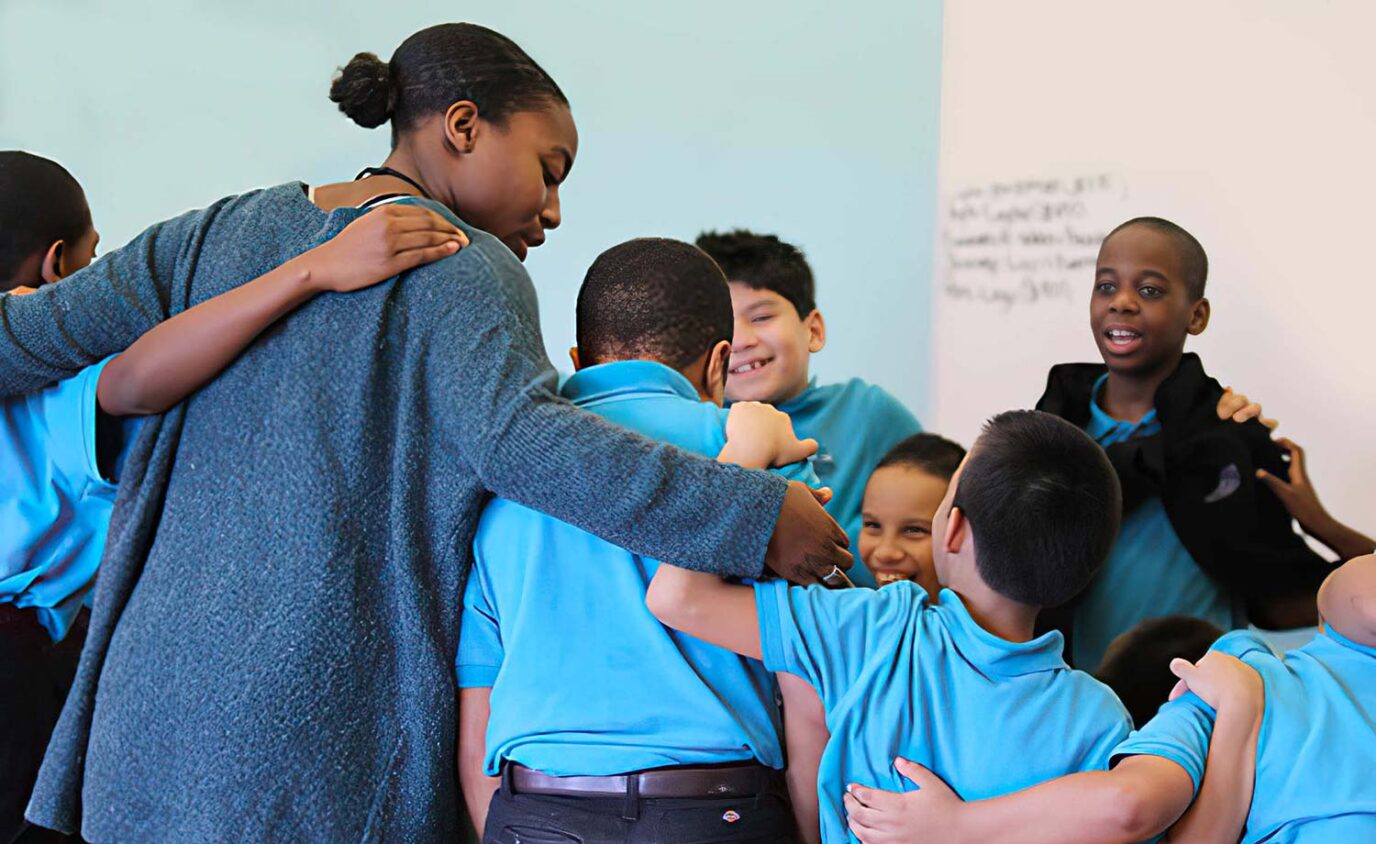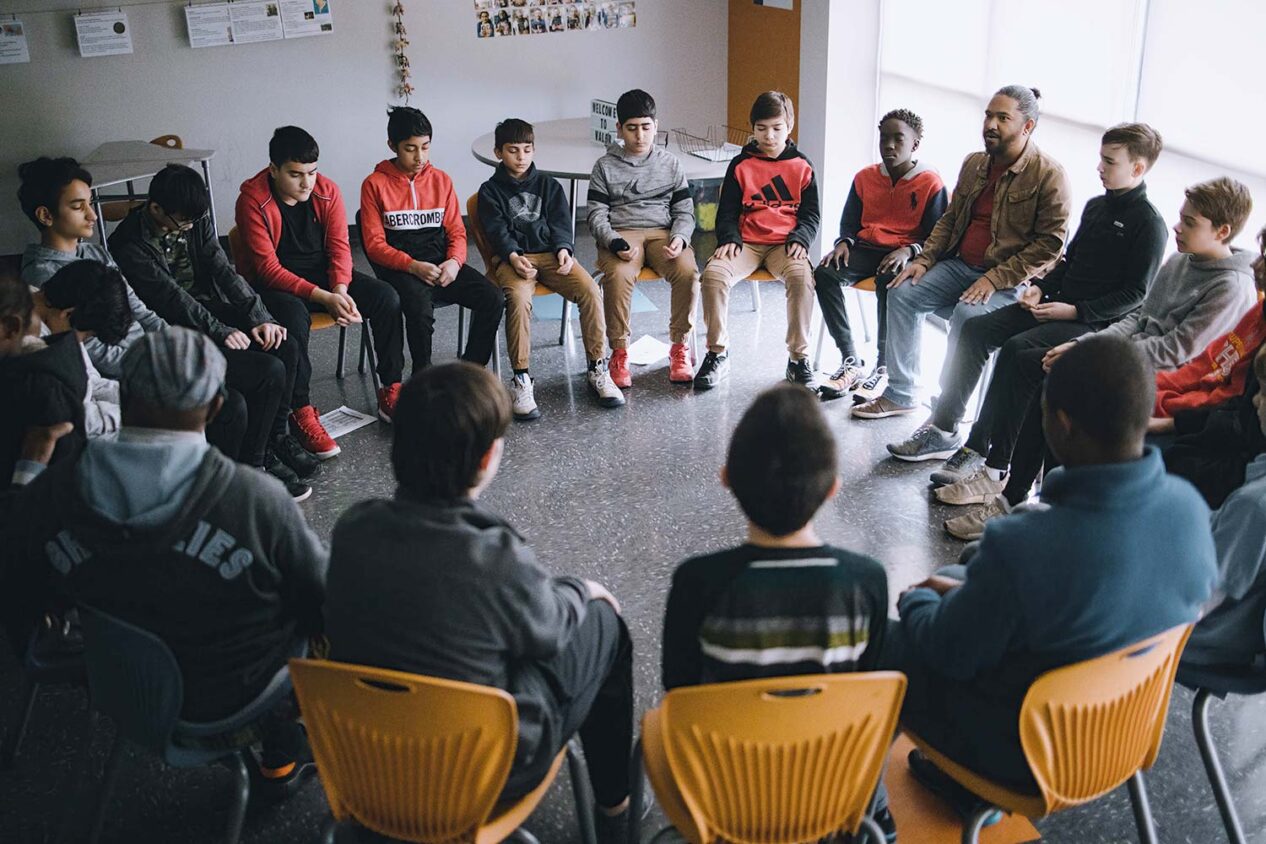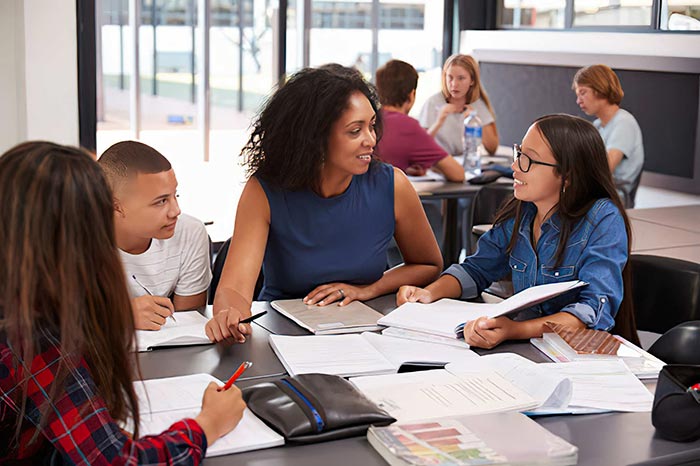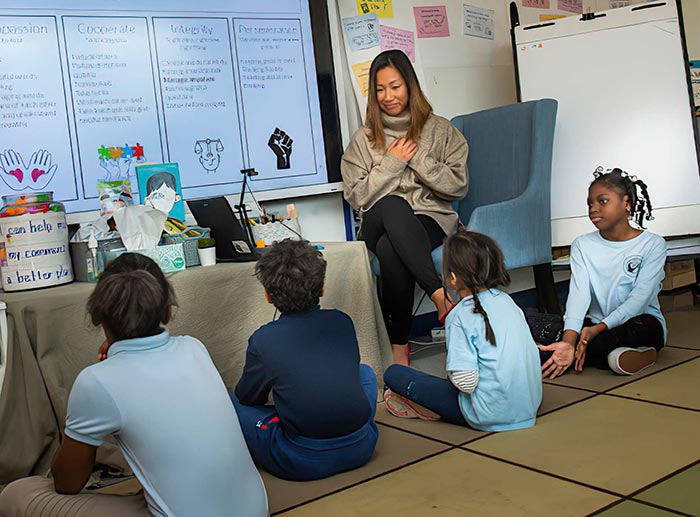Fostering Relationships and Well-being through Advisories

As students go from elementary to middle school, they often go from having one teacher to multiple teachers. That one teacher can provide a psychological homebase—a critical element of feeling comfortable at school. The use of advisories—one of several practices covered on the Innovative Models Exchange—seeks to build that psychological support by placing students in peer groups led by an advisor to ensure everyone has an advocate. The overarching goal of advisory is to build strong relationships between the advisor and students, as well as peer-to-peer relationships, so every student is known well academically, socially, and emotionally in the school community.
Students need ‘a person’ in the building who they trust and can go to for support. Students benefit from core groups that remain generally unchanged and are spaces where students can build relationships, says a coach who is part of Valor Collegiate Academies Compass model.
“In an advisory model, students get both of those things. With an advisor/mentor they have an adult with whom they can build a relationship wherein the adult becomes someone who knows them well, both socially and academically. With their group, they build connections that may not necessarily be close friendships but these are connections that students can lean on for a variety of reasons.”
Advisories are often implemented in middle and high schools settings, but elementary schools often engage in advisory-like practices in their self-contained spaces.
WHAT ARE THE TRADEMARKS OF ADVISORY?
Relationship building
Relationship building is the foundation of advisory. Students are grouped with peers and are matched with an advisor or a pair of advisors who will support them throughout the school year or multiple school years. Ideally, the peer group should stay consistent throughout their education, providing them lasting support.
The goal is that every student in the building has at least one or two people that are their advocates that they know they can come to, that they have a strong relationship with, and that they trust and are their go-to people
Trevor Gardner, Director of Teaching and Learning at ARISE High School
A consistent group and advisor allows students to form connections that provide them with essential support that goes beyond academics. For City Neighbors High School’s Pod model, students are usually paired with an advisor for the entirety of their high school education and advisory groups are intentionally formed to bring students of diverse backgrounds together.
“It is important for a consistent advisor because students build a strong connection of trust with that adult,” says Cheyanne Zahrt, the principal at City Neighbors High School. “The adult can then advocate and support a child through their academic and social needs.”
That relationship building extends beyond the classroom as well. Advisors often communicate regularly with parents to provide key insights into their child’s well-being. This practice is central to some models, including Achievement First Greenfield Schools’ Goal Teams. Advisors speak with parents on a bi-weekly basis, if not more frequently depending on a student’s needs.

Goal-setting and reflection
When advisory groups meet, the focus isn’t on core subjects. Instead, time is spent on goal setting, progress reflection, and other skills-based studies, such as resume writing and college application workshops.
In Goal Teams, students engage in weekly goal setting through the use of worksheets. Advisors prompt students to reflect on their goals throughout the week, culminating in a larger reflection at the end of each week. Advisors offer feedback and work closely with students to establish plans to meet their goals. Advisory can also be a place for habit development that can help students meet personal objectives.
“Another benefit of the advisory is that it allows us to build in curriculum and content that is done and seen by the whole school or a whole grade level,” Gardner says. “You can really build the culture that way. It also doesn’t take class time, so we’re not asking our English, history, or math teachers to take time out of their academic content to do the schoolwide advisory curriculum.”
Setting students up for postsecondary success is the foundation of the EPIC model. Advisory serves as the consistent touchpoint for students, where they build relationships and reflect on progress toward their goals. The advisor helps students choose experiences that will set them up for postsecondary success and prepares them for student-led conferences.
Social-emotional development

Advisory serves as a way to guide social-emotional development through deep relationship building and development of key social-emotional skills such as conflict resolution, emotional regulation, and dedicated time for social-emotional development.
The Compass model hinges on creating a circle of trust that fosters social-emotional well-being. During advisory sessions called Circles, the facilitator leads a practice to ground students. Then each student has the opportunity to share how they are feeling that day before moving into the core work of the Circle. That work centers around the model’s signature Badge Work, a social-emotional learning curriculum designed for students to develop key mindsets, habits, and skills. Before closing with reflection, students share appreciations for other people.
“The year over year connection/relationship building that occurs when students are in the same group and have the same adult leading the space leads to increased feelings of safety. Students feel open to being vulnerable with each other and are more genuine in their follow-up with each other,” a coach in the Compass model says. “Specifically in our Circles, students that have both been together multiple years and had the same mentor share that they enjoy the mentor time and Circle more than for those who’ve had a different mentor each year and/or in a different group. When students are moved from a mentor group, they often report being frustrated by that and name emotional safety as a reason.”
Van Ness Elementary’s Whole Child Model is another example where social-emotional well-being is at the center. At Van Ness, each day begins with a Strong Start, a consistent routine that was built to ensure students’ psychological safety. One component of Strong Start is Breathe & Focus. This teaches student self-regulation strategies and other classroom-based skills that prepare them for a day of learning. Educators also form relationships with students and families in and out of the classroom to build the trust needed for social-emotional development. Through a multi-tiered approach, the Whole Child Model provides extra support to students who need it.
Consistency and routine

In order for advisory to be successful, advisors should have consistent touchpoints with their group. The purpose of each session can vary depending on the schedule, but it’s crucial to establish a routine.
The City Neighbors High School’s Pod model begins advisory with announcements and intention setting every day. Once a week, students engage in circle time, which can be centered around current events, social-emotional issues, and student- or teacher-led interests. At a regular cadence, students are offered the chance to explore topics that interest them. And once a week, they have a study hall that concentrates on individual learning plans or journaling.
That is just one example, though. Advisory can be spent however the advisor or students see fit as long as it focuses on the social-emotional well-being and goals of the student. In the St. Benedict’s model, students meet daily for Group Period, a fully student-led advisory model where students provide peer motivation for both academic and personal development and determine how to use the time to best serve all students in their group.
WHAT ASPECTS VARY?
- Amount of time spent in advisory groups: While spending time in one’s advisory every day helps ensure consistency, it’s not essential. Similarly, sessions can range from 30 minutes to two hours depending on the schedule and content covered.
- Number of students in the group: Greenfield Goal Teams keeps groups to sizes of 8-12 students. Big Picture Learning’s advisory groups are 15-20 students.
- Number of advisors: ARISE uses a co-advisor operation model, whereas other models have one advisor per group of students.
- Length of time with one advisor: EL Education keeps students with the same advisor for the three years in middle school and four years in high school, while others have a new advisor each year.
ADVISORY MODELS
- ARISE High School’s Adelante Student Services
- Big Picture Learning
- Valor Collegiate Academies Compass
- EL Education
- Intrinsic Schools’ EPIC
- Greenfield Goal Teams
- City Neighbors High School’s Pod
- St. Benedict’s Model
- Van Ness Elementary’s Whole Child Model
To learn more about these models and check out other supports to help your community get started with advisory, visit this collection on the Innovative Models Exchange.
Transcend supports communities to create and spread extraordinary, equitable learning environments.

